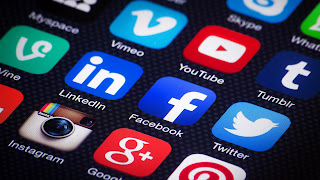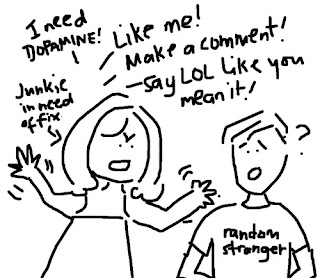It is no longer news that social media has become the major means by which several people, organizations and even the government share ideas, messages and information. The total number of users of various platforms like Facebook, SnapChat, Twitter, Instagram, LinkedIn and Google+ are in their billions; throw in the less known platforms, and the number becomes even more staggering. This makes it clear that social media is actually everywhere (where there are no internet restrictions) and it does not look like it will be going away any time soon, if at all.
The major appeal of social media is the perceived anonymity or security it offers to the users, thus they can say whatever they want to say without the risk of being judged; at least that was how it started out. With the advent of cyber bullying, one cannot really guarantee what can be said that would not attract a backlash from other users, both the strangers and the non-strangers. On the subject of security and anonymity, the appeal lies in the fact that all forms of interaction via social media are virtual. This means that the intrinsic properties of a real-life experience are retained but the complexities that accompany face-to-face interactions are excluded. Thus, the average person can connect with their friends and colleagues without having to go through the “stress” of tasking the brain while interpreting their body languages, or walking into emotional mine traps that are unavoidable at a large gathering. Social media facilitates interactions that require less of us and so, we love it.
The sheer size of the social media platforms is another factor that has contributed to their popularity and their sustenance. The number of users signing up on these platforms is continually on the increase and even though it consumes a lot of time and attention, users have no hang-ups coming back time and time again until it becomes integrated into their routine and they just cannot go a day without social media. In addition, many businesses float their merchandise and services online before becoming a brick and mortar business. Social media has given many small businesses the needed edge to compete with leading names and brands simply because it helped them to relate and connect with their customers.
In an interesting twist, there is some scientific backing to the reason why social media has become ubiquitous in its reach and this can be found in hormones. Yes! It is very plausible that social media biopsychology exists and it is based on two chemicals produced by the brain: oxytocin and dopamine. They are two of the many neurotransmitters produced by the brain on the go and they have very specific functions in the human brain.
Oxytocin is quite aptly described as the “love chemical” because it has been discovered that its production increases when a person feels loved due to the actions of other people. So, when people fall in love or on their wedding day, their oxytocin levels are usually pretty high and this same spike in oxytocin has been observed when people spend about ten minutes on social media, and they absorb all the goodwill and love being sent their way whether through the number of likes on their pictures, their number of followers or even positive comments on their posts. In addition, they experience feelings of satisfaction, trust, love, and reduced stress levels - all features that comes with oxytocin and the social media and feelings that people love to experience.
Dopamine, when produced, stimulates the desire to find pleasure and satisfy wants. This hormone has also been tied in with addiction based on the fact that the person or user as it were, seeks to maintain and sustain the pleasure induced when it is released. The desire to achieve the pleasure threshold is very strong and so people will keep doing those things and the desire will keep increasing and so the cycle continues. This scenario also applies to social media and this is why it becomes increasingly difficult for people to resist posting pictures on Instagram for likes or Tweeting for retweets.
SGPsychStud: Networking on Social Media
Jerry O.: The Influence of Social Media on Behaviour
 |
| Image Credit: http://marketingland.com/wp-content/ml-loads/2014/07/social-media-mobile-apps-ss-1920.jpg |
The Appeal of Social Media
The major appeal of social media is the perceived anonymity or security it offers to the users, thus they can say whatever they want to say without the risk of being judged; at least that was how it started out. With the advent of cyber bullying, one cannot really guarantee what can be said that would not attract a backlash from other users, both the strangers and the non-strangers. On the subject of security and anonymity, the appeal lies in the fact that all forms of interaction via social media are virtual. This means that the intrinsic properties of a real-life experience are retained but the complexities that accompany face-to-face interactions are excluded. Thus, the average person can connect with their friends and colleagues without having to go through the “stress” of tasking the brain while interpreting their body languages, or walking into emotional mine traps that are unavoidable at a large gathering. Social media facilitates interactions that require less of us and so, we love it.
The sheer size of the social media platforms is another factor that has contributed to their popularity and their sustenance. The number of users signing up on these platforms is continually on the increase and even though it consumes a lot of time and attention, users have no hang-ups coming back time and time again until it becomes integrated into their routine and they just cannot go a day without social media. In addition, many businesses float their merchandise and services online before becoming a brick and mortar business. Social media has given many small businesses the needed edge to compete with leading names and brands simply because it helped them to relate and connect with their customers.
Big Think: How Online Advertising Is Tricking Your Thoughts, Attitudes, and Beliefs | Tristan Harris
Neurochemicals Involved in Social Media Usage
In an interesting twist, there is some scientific backing to the reason why social media has become ubiquitous in its reach and this can be found in hormones. Yes! It is very plausible that social media biopsychology exists and it is based on two chemicals produced by the brain: oxytocin and dopamine. They are two of the many neurotransmitters produced by the brain on the go and they have very specific functions in the human brain.
 |
| Image credit: http://static.rappler.com/images/orig-dopamine-junkie-sketch.jpg |
Dopamine, when produced, stimulates the desire to find pleasure and satisfy wants. This hormone has also been tied in with addiction based on the fact that the person or user as it were, seeks to maintain and sustain the pleasure induced when it is released. The desire to achieve the pleasure threshold is very strong and so people will keep doing those things and the desire will keep increasing and so the cycle continues. This scenario also applies to social media and this is why it becomes increasingly difficult for people to resist posting pictures on Instagram for likes or Tweeting for retweets.
By taking a cursory look at both hormones, it becomes very obvious that social media comes with cuddly and great feelings that everyone wants and it is next to impossible to not desire more of it. Little wonder then that social media has permeated the very core of human existence and it is one phenomenon that will not fade away with time.For more posts on Social Media on SG Psych Stuff:
SGPsychStud: Networking on Social Media
Jerry O.: The Influence of Social Media on Behaviour

Comments
Post a Comment